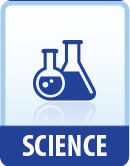|
This section contains 335 words (approx. 2 pages at 300 words per page) |
World of Health on Franois Jacob
François Jacob was born in June 1920 in Nancy, Meurthe-et-Moselle, France. He intended to be a surgeon, but injuries he sustained during World War II prevented this, and he switched to research. He received his M.D. in 1947 from the University of Paris and his Doctor of Science in 1954 from the Sorbonne. He then joined the faculty of the Pasteur Institute, becoming head of the Department of Cellular Genetics in 1960. He became a professor of cellular genetics at the College de France in 1964.
Jacob's experiments with E. coli showed that the medium in which the bacteria are grown affects the type and amount of enzymes the bacteria produce (induction). From this, the three scientists proposed that the bacteria regulate enzyme production. If grown in the sugar glucose, the bacteria produce very little of the enzyme -galactosidase, because they do not require it for metabolizing glucose. But if they grow in lactose, E. coli bacteria produce much more -galactosidase, which they need to metabolize lactose.
To explain how the bacteria regulate enzyme production, Jacob (with Andre Lwoff and Jacques Monod) theorized that there are three types of genes, a gene being a deoxyribonucleic acid (DNA) triplet or triplet cluster. An operon is a gene cluster composed of two types of genes: Z (structural) genes, which carry the instructions for protein production, such as for the -galactosidase, and O (operator) genes, which control whether the Z genes' instructions are carried to the cell's ribosomes for protein production. The third type, called R (regulator) genes, instruct production of proteins that control the activity of other genes. In E. coli, when lactose is not present, an R gene instructs production of a repressor protein that binds to the O gene, turning the gene "off" by preventing it from being copied by ribonucleic acid (RNA). When lactose is present, the repressor binds to it rather than the O gene. This allows the O gene to turn the Z gene "on." Research showed the theory to be correct.
|
This section contains 335 words (approx. 2 pages at 300 words per page) |


